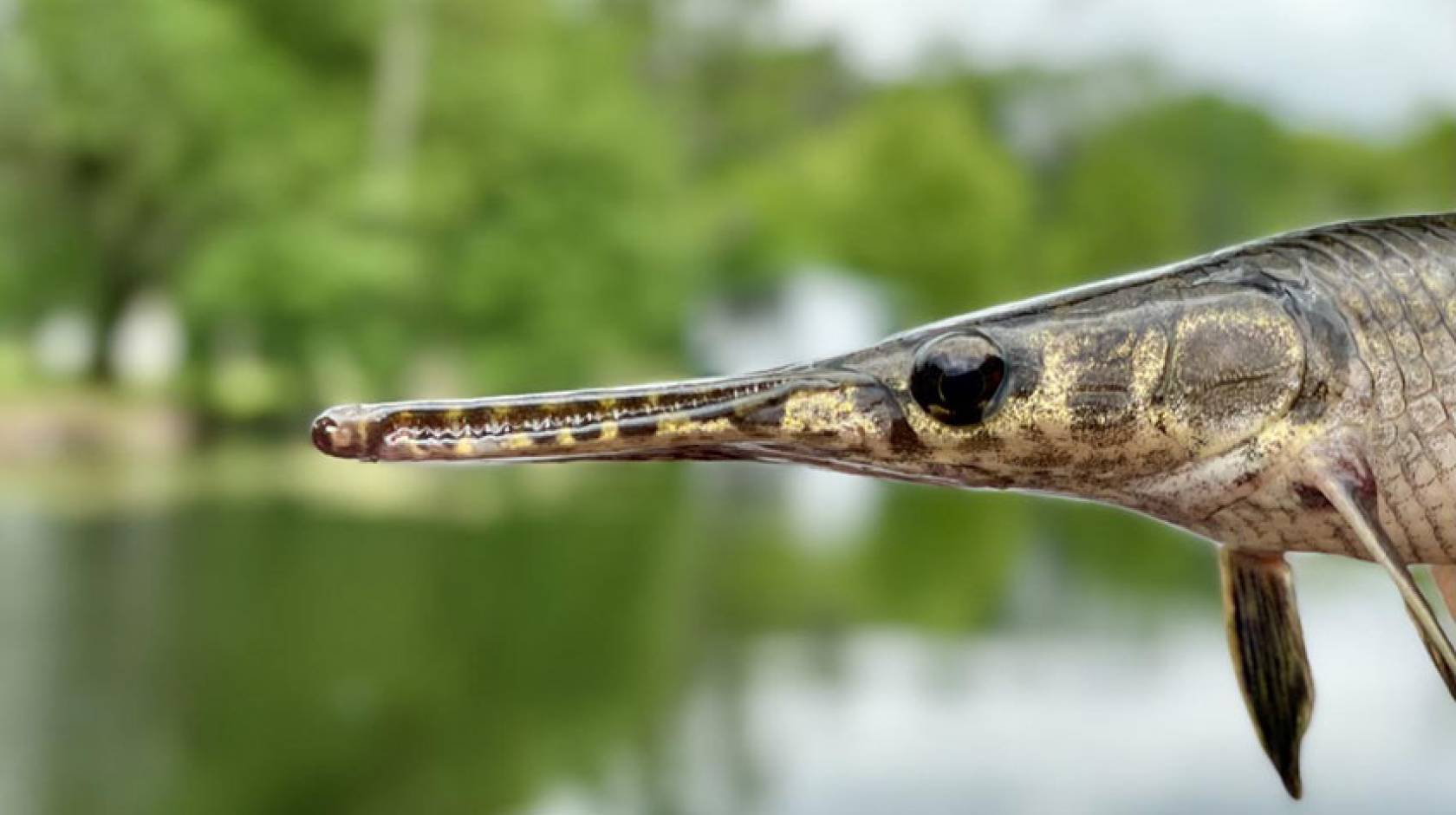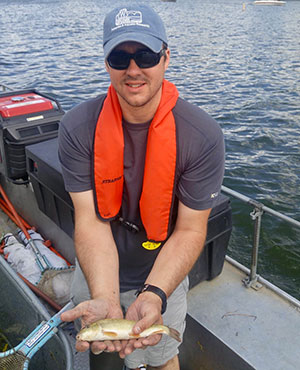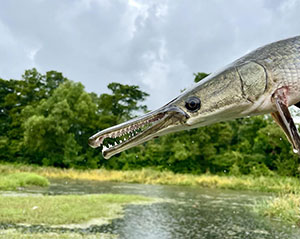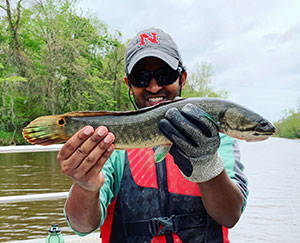Kat Kerlin, UC Davis

From art to religion to land use, much of what is deemed valuable in the United States was shaped centuries ago by the white male perspective. Fish, it turns out, are no exception.
A study published in Fisheries Magazine, a journal of the American Fisheries Society, explores how colonialist attitudes toward native fishes were rooted in elements of racism and sexism. It describes how those attitudes continue to shape fisheries management today, often to the detriment of native fishes.
The study, led by the University of California, Davis, with Nicholls State University and a national team of fisheries researchers, found that nearly all states have policies that encourage overfishing native species. The study maintains that the term “rough fish” is pejorative and degrading to native fish.

Courtesy Andrew Rypel/UC Davis
“That has bothered me for a long time,” said lead author Andrew Rypel, co-director of the Center for Watershed Sciences and the Peter B. Moyle and California Trout Chair in Coldwater Fish Ecology at UC Davis. He and others have been disturbed by images of “glory killings” of native fish that periodically pop up on the internet, as well as the lump categorization of less preferred species as “rough” or “trash” fish.
“When you trace the history of the problem, you quickly realize it’s because the field was shaped by white men, excluding other points of view,” Rypel said. “Sometimes you have to look at that history honestly to figure out what to do.”
The study offers several recommendations for how anglers and fisheries managers can shift to a new paradigm that’s more inclusive and beneficial to all fish and people.
A ‘rough’ start
The term “rough fish” dates to commercial riverboat fishing in the mid-late 1800s. Slow, heavy boats would lighten their loads by “rough-dressing” — removing organs but not filleting — less desirable species and discarding them. Biologists came to use the term to describe an unsubstantiated idea that native fish limit game fish species historically desired by Europeans. That attitude posed a major threat to many native species, which were killed in large numbers.
For instance, the alligator gar, an ancient species that can grow more than 8 feet long and weigh 300 pounds, was particularly persecuted in the past century. Called a “wolf among fishes,” poison, dynamite and electrocution were used to greatly reduce its population. But now some fishers spend thousands of dollars for the opportunity to catch and release a giant gar. In 2021, Minnesota changed its statute to describe gar as a “game fish” rather than a “rough fish.”

Solomon David/Nicholls State University
Co-author Solomon David has helped fuel renewed appreciation for gar and its relative, bowfin. He runs the GarLab at Nicholls State University in Louisiana, where he is an assistant professor. He said many native fishes, such as suckers and gars, have long been valued by Indigenous people and people of color.
“European colonists heavily influenced what fishes were more valuable, often the species that looked more similar to what they’re used to,” David said. “So trout, bass and salmon got their value while many other native species got pushed to the wayside.”

Solomon David
Limited view
The study authors conducted a survey of fishing regulations across the United States to compare policies and bag limits on “rough fish” with those of largemouth bass, a ubiquitous sport fish.
“When I was a kid fishing, you might go to the river with a worm and catch all these interesting species,” Rypel said. “The guidebook would just say ‘rough fish, bag unlimited.’ Not much has changed since I was kid.”
The study found that no states had bag limits rivaling those for the bass. While black basses were often managed at five fish per day, regulations for most native fishes were extremely liberal. Forty-three states had unlimited bag limits for at least one native species. In the remaining states, bag limits were between 15 and 50 fish a day.
Freshwater ecosystems are threatened by pollution, habitat loss and climate change. Up to half of fish species globally are in some form of decline, and 83 percent of native California fish species are declining. Native fishes help ecosystems in many ways, including nutrient cycling and food chain support for other native species. The authors pointedly call for a “rewrite” in managing them.
Recommendations
The study’s recommendations for that rewrite include:
- Stop saying “rough fish.” They suggest “native fish” as a simple alternative.
- Integrate Indigenous perspectives into fisheries management.
- Revisit species bag limits. Lower bag limits for native species until the science is conducted to confirm they could be higher. The study takes particular note of the fast-growing bowfishing market that has contributed to removing native species.
- Support science on native fishes. Game fish receive 11 times more research and management attention in American Fisheries Society journals than do “rough fish.” To learn the true value of native fishes, more research is required.
- Co-manage species that have co-evolved, such as freshwater mussels and fish that host them.
- Correct misinformation and enhance science education through outreach and education for all ages.
“We have a chance to redirect fisheries science and conservation and expand it with respect for biodiversity and diversity,” David said. “It’s been a long time coming. Change is slow, but we have an opportunity here, and we should take advantage of it.”
Additional co-authors include Parsa Saffarinia, Christine Parasek, Peter Moyle, Nann Fangue, Miranda Bell-Tilcock, and David Ayers of UC Davis; Caryn Vaughn of University of Oklahoma; Larry Nesper of University of Wisconsin-Madison; Katherine O’Reilly at University of Notre Dame; and Matthew L. Miller with The Nature Conservancy.
The study was funded by the Peter B. Moyle & California Trout Endowment for Coldwater Fish Conservation and by the California Agricultural Experimental Station of UC Davis.

